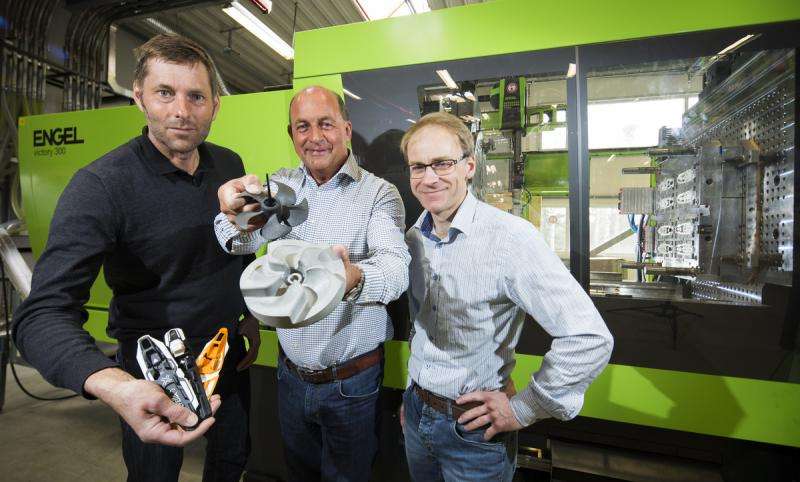3-D help for needy and creative entrepreneurs

If you want to manufacture single prototypes or small-scale production series, 3D-printed forms may be the way to go.
Imagine that the ski bindings manufacturer Rottefella has come up with a ground-breaking idea it wants to try out before an important equipment expo next week. Where can they get a quick and functional prototype? Casting a standard steel prototype will take much too long.
Young and creative start-up entrepreneurs are experiencing a similar problem. Because steel castings are so expensive, risky projects are likely to get shelved. Start-ups are simply not able to finance this sort of small-scale manufacture.
So a number of research and industrial partners have now joined forces to find a solution. They have launched the AddForm project with the aim of developing the highest quality possible 3D-printed forms in plastic.
From steel to plastic
"In mass production settings, machined steel and 3D-printed steel components are just the job", says Erik Andreassen at SINTEF Materials and Chemistry. "A good example is Lego's production of its millions of bricks", he says.
"But if you want just a few prototypes or small-scale production, 3D-printed forms in plastic (or more correctly polymer composites mixed with ceramic or metallic particles) may be the way to go. Forms of this type can be made in a day or two, and the product can be spray-formed using exactly the right plastic for the job", says Andreassen.
The right stuff
3D-printing, or additive manufacturing, was launched commercially more than 25 years ago, and researchers at SINTEF have been working on the process in connection with many different projects.
The aim of the AddForm project is to understand the properties of the form materials in terms of the stresses they are subject to during the spray-forming process. In order for industrial manufacturers to obtain fast and satisfactory results, materials must be tested and compared in order to assess their differences.
"There are a number of 3D printing processes and a variety of materials types available", explains Andreassen. "And all of them have their strengths and weaknesses when it comes to manufacturing forms", he says.
The researchers will be working to identify quicker ways of form assembly and effective surface treatments to provide forms with the desired finish.
Commercial manufacturers won't just be getting fast and inexpensive prototypes. The forms will also be made using the correct materials possessing the specific properties intended for full-scale production.
"It's important to note that for most industrial applications it isn't yet possible to produce 3D-printed plastic components with the 'correct' properties when it comes to attributes such as impact or fire resistance", says Andreassen. "We have to take spray-forming route in order to achieve this", he says.
Global head start
The AddForm project has been launched by OM BE Plast and SINTEF, who have since been joined by companies such as Rottefella, Stokke, Eker Design and Lærdal Medical.
There are several R&D centres worldwide working on form production of this kind, but this Norwegian consortium believes it has a head start. It has already identified many effective solutions as yet not on the market.
It is also an advantage that all the industrial partners are carrying out high-level product development, and many are working on challenging product types. Many of the partners also have their own 3D printers.
OM BE Plast has already received many requests for the production of new forms.
"The technology is ready for some of these, but many will have to wait until we've obtained the answers we're hoping for from this R&D project", says Andreassen.
Provided by SINTEF




















